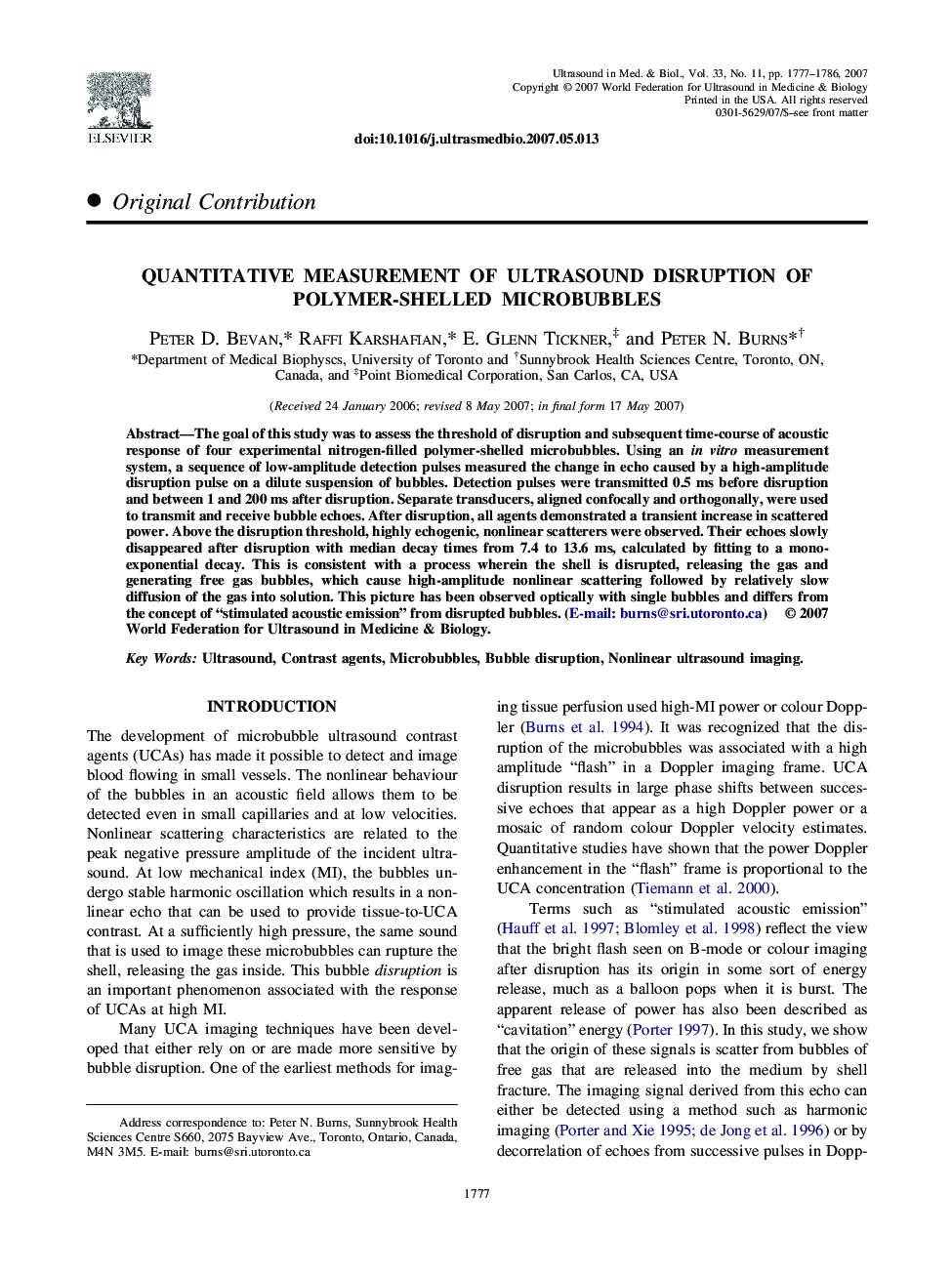| کد مقاله | کد نشریه | سال انتشار | مقاله انگلیسی | نسخه تمام متن |
|---|---|---|---|---|
| 1762811 | 1019718 | 2007 | 10 صفحه PDF | دانلود رایگان |
عنوان انگلیسی مقاله ISI
Quantitative Measurement of Ultrasound Disruption of Polymer-Shelled Microbubbles
دانلود مقاله + سفارش ترجمه
دانلود مقاله ISI انگلیسی
رایگان برای ایرانیان
کلمات کلیدی
موضوعات مرتبط
مهندسی و علوم پایه
فیزیک و نجوم
آکوستیک و فرا صوت
پیش نمایش صفحه اول مقاله

چکیده انگلیسی
The goal of this study was to assess the threshold of disruption and subsequent time-course of acoustic response of four experimental nitrogen-filled polymer-shelled microbubbles. Using an in vitro measurement system, a sequence of low-amplitude detection pulses measured the change in echo caused by a high-amplitude disruption pulse on a dilute suspension of bubbles. Detection pulses were transmitted 0.5 ms before disruption and between 1 and 200 ms after disruption. Separate transducers, aligned confocally and orthogonally, were used to transmit and receive bubble echoes. After disruption, all agents demonstrated a transient increase in scattered power. Above the disruption threshold, highly echogenic, nonlinear scatterers were observed. Their echoes slowly disappeared after disruption with median decay times from 7.4 to 13.6 ms, calculated by fitting to a mono-exponential decay. This is consistent with a process wherein the shell is disrupted, releasing the gas and generating free gas bubbles, which cause high-amplitude nonlinear scattering followed by relatively slow diffusion of the gas into solution. This picture has been observed optically with single bubbles and differs from the concept of “stimulated acoustic emission” from disrupted bubbles. (E-mail: burns@sri.utoronto.ca)
ناشر
Database: Elsevier - ScienceDirect (ساینس دایرکت)
Journal: Ultrasound in Medicine & Biology - Volume 33, Issue 11, November 2007, Pages 1777-1786
Journal: Ultrasound in Medicine & Biology - Volume 33, Issue 11, November 2007, Pages 1777-1786
نویسندگان
Peter D. Bevan, Raffi Karshafian, E. Glenn Tickner, Peter N. Burns,